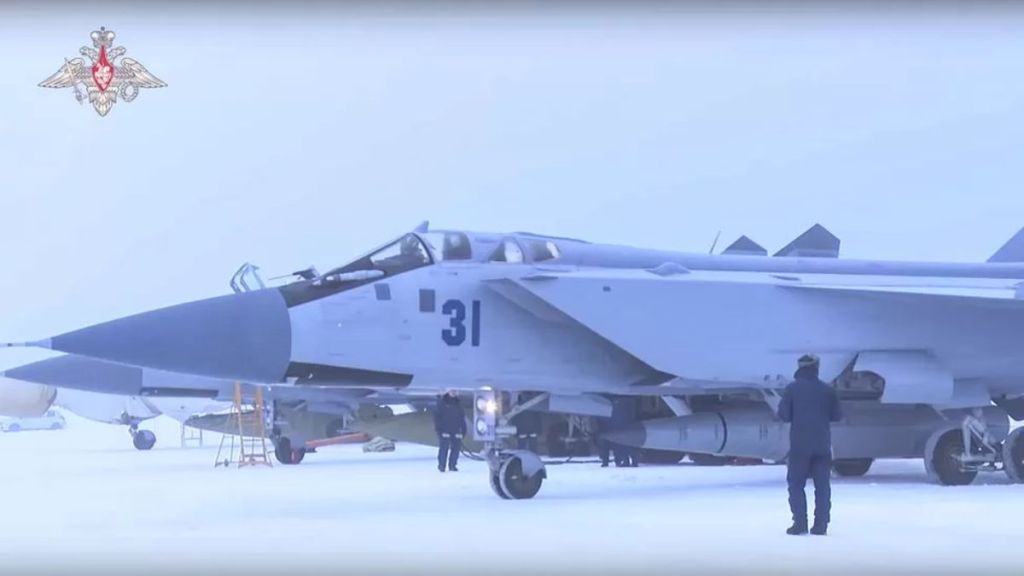By Ajey Lele
In the Ukraine theatre, Russia has done this again. During aerial bombing on 09 March 2023 they fired hypersonic missiles. Around a year back on 19 March 2022 they had fired these missiles on the targets in Ukraine. Use of these Kinzhal (Dagger) hypersonic missiles was considered as a disproportionate use of weaponry since there is no target of worth in Ukraine to use such weapons, which travel with a minimum speed of five times more than the speed of sound. Today, one year after the first use of this weapon the ‘ground situation’ has not changed much. Possibly, there could also have been some other instances during the last one year, when the Kinzhal could have been used. There was a claim by Ukrainian officials that one such missile was used for the deadly strike that gutted a section of a large apartment complex in the city of Dnipro (46 people were killed) during Jan 2023. However, the fury witnessed on 09 Mar 2023, with simultaneous attack using six missiles was distinct. Obviously, the question arises, ‘why Russia has done this again, when they have already demonstrated their capabilities in the field of hypersonic by battle testing these weapons a year back’?
Will use of such missiles, would impact the resolve of the Ukrainian leadership? Highly unlikely. If the purpose is to give a signal to the west, then it has already been achieved a year back. Though Russia needs to realise that now-a-days such singling hardly matters to the west, North Korea is a great example. With the use of such weapons, can Russia start a new arms race? The answer is: it has already started.
A year back, the US Def Sec Lloyd Austin had stated that ‘I would not see use of these missiles as a game changer’. However, the actions on ground do not match with this official view. The US has already started reassessing their global strike capabilities. There is a realisation that the hypersonic weapons being developed by Russia and China are designed mainly for use with a nuclear warhead, while the same is not the case with the US. Also, there are issues of accuracy with the US missiles. Obviously, the US defence research agency DARPA must be working overtime.
There could be some tactical reasons behind this biggest ever missile attack (81 missiles) by Russia on 09 March 2023. It had helped them to cut off the last remaining external power line to the Zaporizhzhia Nuclear Power Plant, which is in territory occupied by Russia, forcing the plant, Europe’s largest, to rely on generator power. However, the plant is known to have started functioning normally after sometime. During this attack Russia had fired six Kinzhal missiles at once. One clear lesson from this attack is that Ukraine was not able to intercept the six Kinzhal ballistic missiles, otherwise they had shot down 34 missiles from the barrage of 81 missiles.
These hypersonic weapons are known to travel at around 1.6 km per second, or more than five times the speed of sound. Some projects under development are working towards producing the weapons, which can travel 25 times more than the speed of the sound. Currently the main players in hypersonic games are China, Russia, and the US. North Korea is known to have made some inroads in this arena. France and the United Kingdom have a joint programme towards development of such missiles, while the states like India are also working on this technology. Broadly, there are two main categories of hypersonic weapons, hypersonic glide vehicles (HGVs) and hypersonic cruise missiles. The HGVs are launched from a rocket towards the target, while hypersonic cruise missiles are powered by high-speed air-breathing engines called scramjets.
The Kinzhal missiles were unveiled in 2018 by the Russian president Vladimir Putin. For now, the present use of these missiles has clearly demonstrated the flexibility these missiles can provide. They can fly low, are manoeuvrable and can hoodwink the missile defence systems. The existing missile defence architecture is not capable of addressing this threat. The entry of these missiles in the battle zone is expected to significantly impact the future of nuclear deterrence.
Probably, for the first time in history, the world is witnessing a trilateral nuclear competition. The Cold War period nuclear showdown was a bilateral affair: the Soviets and the US were the only players. But today when the so-called Doomsday Clock signals highest ever peril level (it is 90 sec to midnight), the nuclear game has become trilateral: with the presence of nuclear actors like the US, Russia, and China. Also, it would be incorrect to overlook the North Korean threat. All this clearly indicates that the future of nuclear deterrence would be dictated by the hypersonic missiles and the already undergoing efforts towards developing next generation missile defence systems, which can handle the hypersonic threat.
In case of Russia-Ukraine conflict, for now, NATO is still in a comfortable position. They can bleed Russia by only supplying the military hardware to Ukraine, without putting much pressure on their economies and militaries. Also, there are no threats to the lives of their citizens. It is just ‘incidental’ that Ukrainian lives are getting sacrificed.
The author is a Consultant, MP-IDSA, New Delhi.
Disclaimer: Views expressed are personal and do not reflect the official position or policy of Financial Express Online. Reproducing this content without permission is prohibited.


